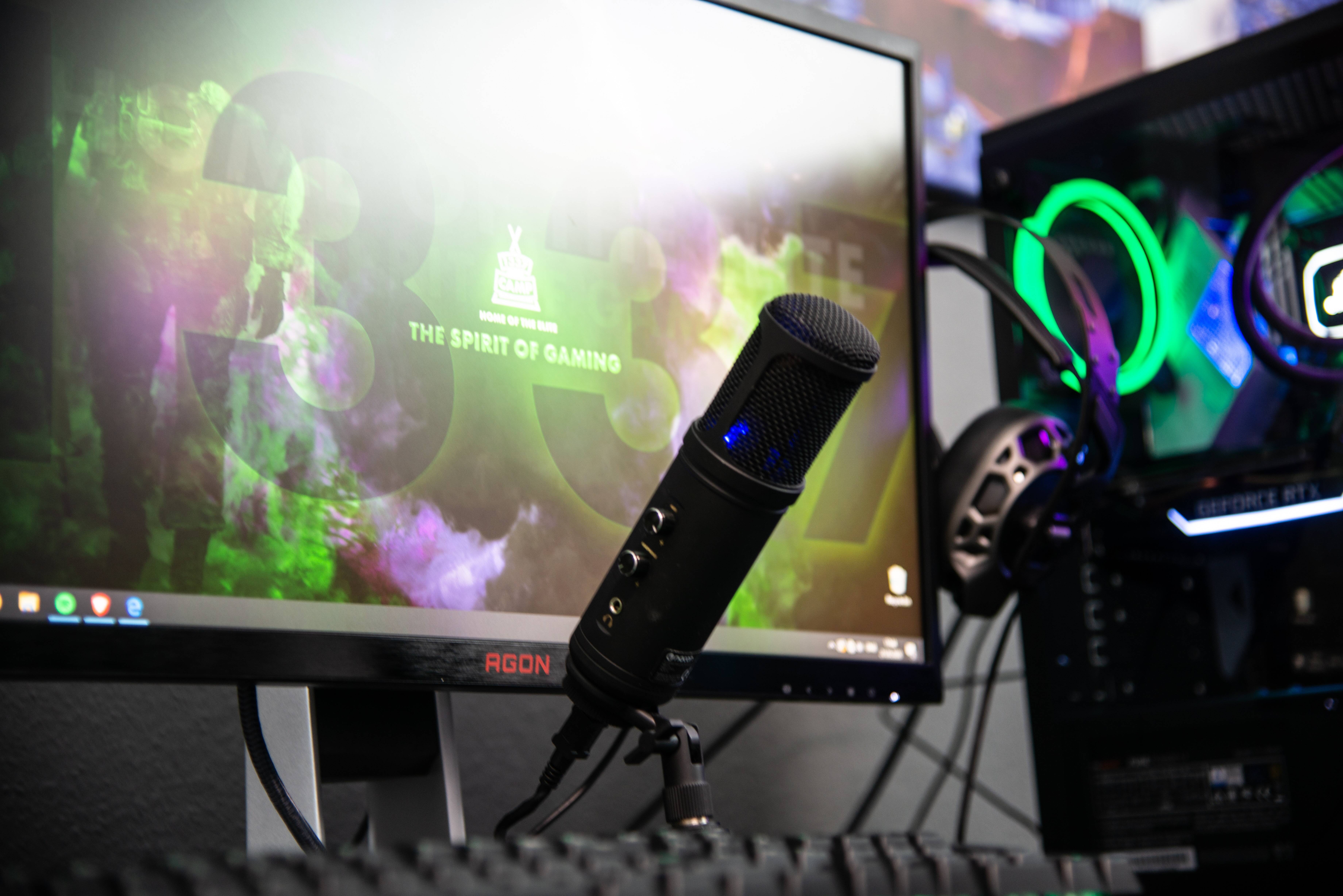Introducing the Theremin
Moviegoers may have been introduced to the strange and otherworldly sound of the theremin through Star Trek, or perhaps from the iconic opening sequence of Doctor Who — or so they think. But what is this bizarre instrument, how is it played, and how can filmmakers and content producers harness the theremin's strains to give their musical projects more staying power?
The theremin — the world's first electronic synthesizer — was invented by Lev Sergeyevich Termen (aka Leon Theremin) in 1919; he patented it in 1928. To play it, a performer waves their hands over an electronic field to produce a sound somewhere between whistling and something more otherworldly. (A great documentary, Theremin: An Electronic Odyssey, is worth checking out for anyone interested in its unusual history and invention.)
Great film composers like Bernard Herrmann have made use of the theremin and its spooky brilliance. Think of the ooo-ooo-OOO sound on the soundtrack of The Day the Earth Stood Still, the fun of Ghostbusters, or the scope of The Ten Commandments. Which film from the list featured the theremin? All of them!
For obvious reasons, the theremin is popular with science fiction and fantasy filmmakers, like Marvel's Loki on TV. But it's not only for them. For Midsomer Murders, for example, it provides the perfect counterbalance to the misty green British landscapes and adds emotion to the opening and closing titles.
Does the Star Trek Theme Really Use a Theremin?
Believe it or not, Star Trek did not use a theremin in its theme. Rather, Star Trek used a distinctive female soprano belonging to opera singer Loulie Jean Norman to convey its outer-space energy, and then in later seasons an electric violin. It was mixed so as not to give any real clue as to the source of the sound.
One thing is certain: a great deal of the show's tone is set by its iconic theme music and voiceover. How much of the success of Star Trek can be attributed to pulling in viewers with its opening sequence? It's hard to quantify, but Star Trek's feeling of optimism and exploration is certainly driven home by the Star Trek theme, originally written by Alexander Courage. Its fast-paced strings and brass in the background give Star Trek a sense of space as boundless and exciting, "the final frontier."
Many fans would insist that the best theme song in the franchise was that original Star Trek theme, which famed composer Jerry Goldsmith reworked for the 1980s William Shatner-Leonard Nimoy Star Trek film series. So much science fiction rests on atmosphere, sound design, and music, whether it's Star Trek or Star Wars, with its classic John Williams theme and innovative sound effects. Star Trek's musical choices underscored its sense of exploring strange new worlds, and perhaps eerie new worlds too.
Some like Star Trek: Deep Space Nine for its musical choices. (Who wrote the music for Deep Space Nine? Dennis McCarthy, who contributed to many other Star Trek franchise entries as well; the Star Trek musical canon is pretty vast. When people ask, "What song is played in the Star Trek movie?", they are usually referring to the Beastie Boys' "Sabotage" in the JJ Abrams 2009 Star Trek reboot.)
So was the Star Trek theme played on a theremin? No. (In the years since the show first aired, though, concerts have been given using a real theremin to perform the main Star Trek theme, and audiences have approved.) And while it sounds like certified musical genius Brian Wilson used one on the hypnotic Beach Boys track "Good Vibrations," opening up a new era of sonic exploration, the instrument was in fact a Tannerin, a different kind of electronic instrument (Paul Tanner was the brilliant musician who invented it).
Another urban myth has it that the Doctor Who theme was played on a theremin — it was not, although star Jodie Whittaker gave a great theremin rendition of the Doctor Who theme on The Graham Norton Show, winning her legions of new fans across space and time.
But even though Star Trek and those other classic media did not use a theremin, canny sound designers and composers shouldn't write it off.
Five Examples of Theremin in Soundtracks
To name five striking examples, the theremin has been used on soundtracks for films such as:
- Hitchcock's Spellbound (1945) for a sense of romance and hypnotism
- Cecil DeMille's 1956 The Ten Commandments, to give a sense of grandeur and scope
- Tim Burton's 1994 Ed Wood, to conjure up the golden days of B-movie making
- Tim Burton's 1996 Mars Attacks, to create a sense of otherworldly fun
- Ivan Reitman's 1984 Ghostbusters, for spooky adventure
So maybe Star Trek was missing out! There's even popular theremin Christmas music online. As for the question of what was the first movie to use a theremin? The answer is Odna, a 1930 Soviet film whose score was composed by none other than famed classical composer Dmitri Shostakovich.
What Type of Music Is a Theremin?
As noted above, the theremin is an early kind of mass-produced electronic musical instrument, played without physical contact. It was invented in 1919 by Leon Theremin (né Lev Termen, or Lev Sergeyevich Termen, to use his full patronymic). Theremin was a pioneer in the world of electronic musical instruments, inspiring later inventions like the Moog synthesizer (invented by Robert Moog).
What Does a Theremin Sound Like?
It's easily recognizable and sounds a bit like an electronic whistling or a musical saw. The theremin's brilliant inventor would perform his invention with the New York Philharmonic in 1928 and set up his lab in New York through the 1930s, where he kept inventing and innovating. He granted commercial rights to the theremin to RCA, and for a long time, it was possible to buy an RCA theremin, though today enthusiasts often build their own.
How Do You Use a Theremin?
As a player moves their hands near two antennae (without touching them), it produces a sound, and the sound changes depending on how high the player raises their hands. The hand near the left antenna controls volume, while the right one controls pitch (there are some single-antenna theremins in the world, but they are the exception). Videos of early player Clara Rockmore show that playing the theremin can be a graceful endeavor. Robert Plant of Led Zeppelin rocked one of the one-antennaed theremins mentioned above in the classic song "Whole Lotta Love."
Use of Theremins in Popular Music From the Last Few Years
Theremin music enjoyed a burst of popularity upon its initial invention in the 1920s. Concerts and demonstrations like the one Theremin gave with the New York Philharmonic attracted enthusiastic crowds. Hollywood introduced it into its arsenal, too, with composers like the legendary Elmer Bernstein and Bernard Herrman making full use of its rich and weird palette that was perfect for science fiction background music.
The brilliant and eccentric composer Percy Grainger made use of the theremin in the 1930s before going to invent his own wacky and wonderful instruments, even composing original works exclusively for the theremin. As the decades wore on, the theremin's popularity waned and spiked. It enjoyed popularity in the 1950s, and then again in the '70s and '90s. It seems like daring composers are continually discovering its capabilities afresh.
Bob Moog, an engineer and electronic music visionary, introduced his Moog synthesizer in the 1960s, which could be seen as a descendent of the theremin. The Moog synthesizer's own sounds and later offspring can be heard in hundreds of pop songs, including "Blue Monday" by New Order (1983), "SOS" by Portishead (2016), and Donna Summer's 1977 disco hit "I Feel Love." For purists, Moog's company also makes its own line of theremins, with an accurate five-octave pitch range and other features that make it user-friendly.
The documentary Theremin, telling the bizarre story of his life — he disappeared in 1938 and was essentially a prisoner of the USSR until he reappeared, aged 93, in the West — spurred another round of interest in theremin music in the '90s, and Lydia Kavina, Theremin's last living protegée at the time, gave a series of recitals open to the public.
In the '20s, Maurice Martenot also invented an instrument that's like a cross between a theremin and an organ, the ondes martenot. The ondes martenot involves a metal ring a player wears on their right index finger and a keyboard that allows them to select notes. Its sounds range from beautiful to unnerving. Composers like Olivier Messiaen loved it, and contemporary avant-garde rockers like Jonny Greenwood and Radiohead have used it on albums like Kid A.
Today, the artist Carolina Eyck tours the world with her hypnotic mix of electronic music instrument theremin and vocals; her version of Ennio Morricone's "The Ecstasy of Gold" became hugely popular online. Bands like the Pixies, the White Stripes, and Mercury Rev, as well as the Rolling Stones and Led Zeppelin, have used the theremin in their songs. The Simpsons memorably uses theremin in its annual Halloween episode.
In short, the theremin's possibilities are various and exciting, ranging from classical to avant-garde, from haunting sound effects to emotional and melodic compositions.
Theremin Music for Your Project
If you're looking for epic science fiction music or something really special, that means royalty-free theremin music. For that, there's one place you should go: StockMusic.net. It has a wonderful range of theremin (and other) music to give any creator's project the boost it needs, at affordable prices. Perhaps best of all, once a content creator purchases music, it's yours to use in perpetuity and as many times as you want. So get in touch with StockMusic.net today and make your project sing (perhaps spookily).




